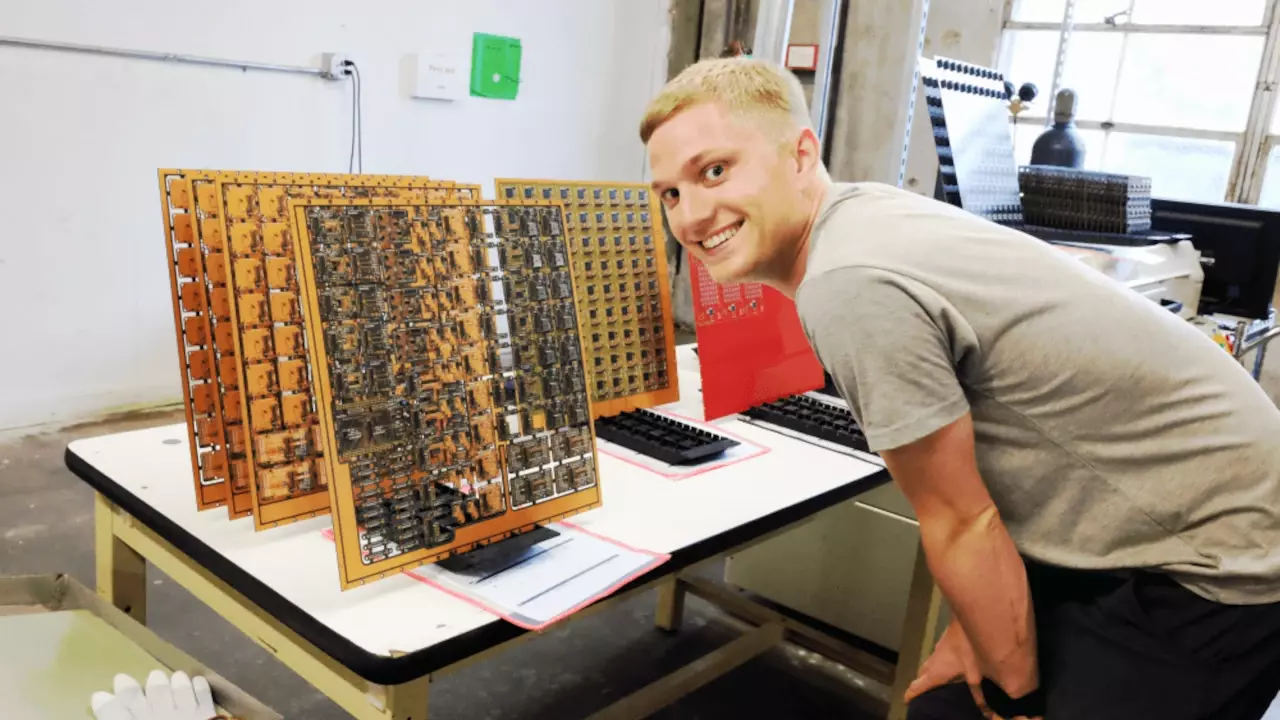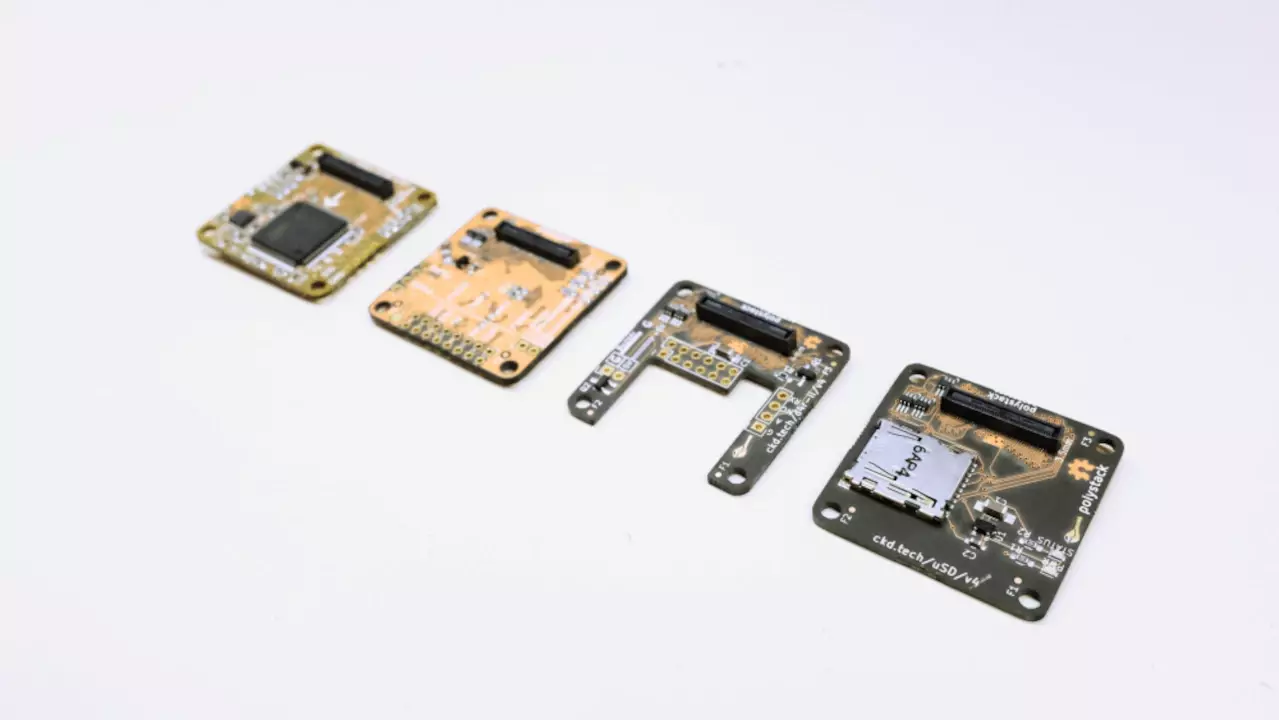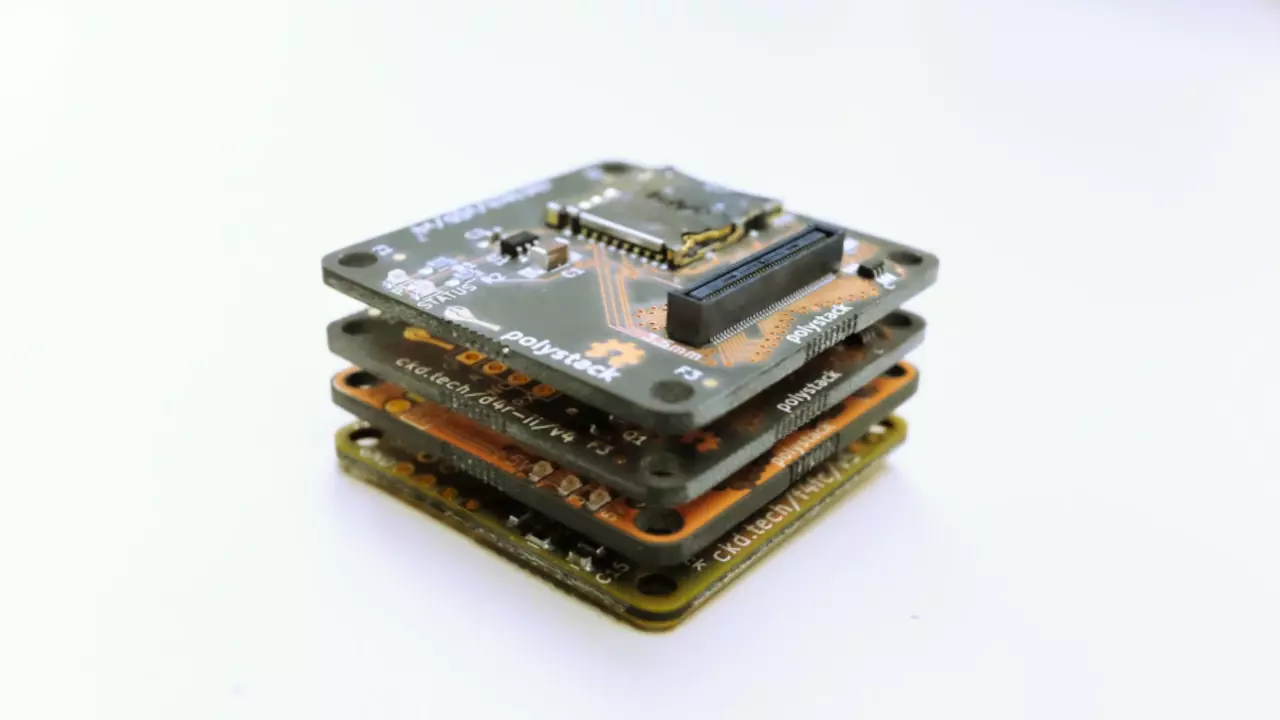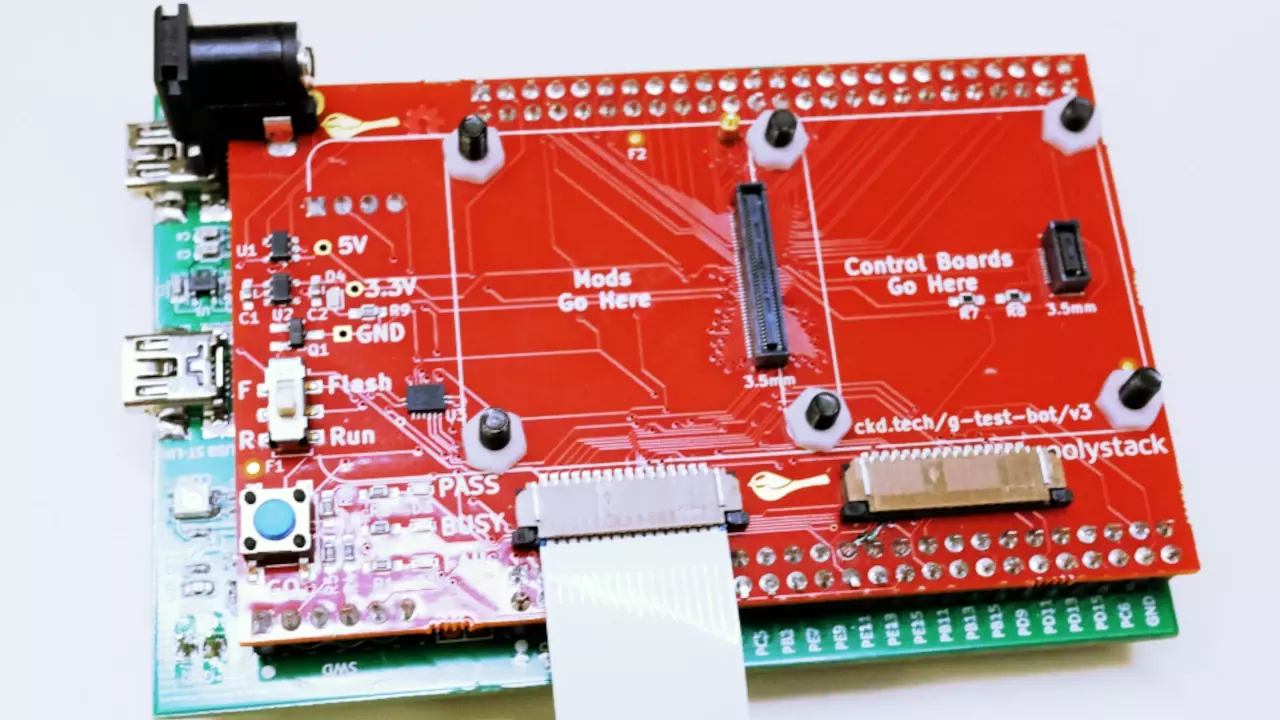Related Topics
Conductive Cuisine
We'll explore an in-depth study conducted by Seth Jenkins, Neil LaTourette, and Brendan Liverman on how boiling time affects hot dog conductivity.
Wanting to be a Wizard - Matt Brown
Matt Brown, shares his career insights, including his experiences working at Tesla and on personal projects like the land speed car and the off-road Viper.
Exploring the Arctic Through Art and Technology with Cy Keener
Cy Keener's work includes a range of data-based efforts to visualize diverse phenomena including ice, wind, rain, and ocean waves.
Other Resources
Circuit Break Podcast
Webinars
Videos
Tour MacroFab's ITAR-Compliant Facility
July 1, 2016, Episode #22
- Scott Shawcroft of Chickadee Tech (see Figure 1) is our guest on this weeks podcast. He is working on a modular flight control system called Polystack. It has 13 different boards that can be stacked together. Similar to shields for the Arduino platform. See Figure 2A and 2B.
- Scott is down here in Houston visiting MacroFab to see his production-run being built, while working on his test fixture with us (See Figure 2).
- Scott is a member of the Seattle Multi Rotors community.
- The software stack is based of off Beta Flight which is a fork of Clean Flight which is a fork of BaseFlight. The very first flight controllers were based of the Wii Nunchuck. Scott uses custom pin mappings and uses a larger ST MCU which required another fork.
- Scott got into Quadcoptors after watching the video Crash Session!!! His first quad was from Flite Test.
- The Tiny Whoop is a small FPV quad that is easy to build.
- Chickadee Tech is Scott’s first step into the hardware world. His first build was a lap timer using the radio strength signal. Scott self-taught himself KiCad.
- AutoDesk purchased CadSoft from Farnell. Autodesk EAGLE – The perfect tool to designing stuff for PIC16MEGA32u4.
- The FR4 Machine Shield we mentioned in a previous podcast has a Kickstarter now. It’s an Arduino “shield” CNC machine. It comes on a 18” x 22” PCB panel. Motor controllers are called “Swap Drives”. Driver chips are on PCB cards that go into edge connectors.
- The FAA released new rules for operating rules for unmanned aircraft (Quads).

Figure 1: Scott Shawcroft of Chickadee Tech checking out the fresh “just out the reflow” panels.

Figure 2A: Four of the Polystack boards. There are 13 boards in total and can be stacked up to 7 at once.

Figure 2B: Four Polystack boards stacked together.

Figure 3: Test fixture for the Polystack boards.
About the Hosts

Parker Dillmann
Parker is an Electrical Engineer with backgrounds in Embedded System Design and Digital Signal Processing. He got his start in 2005 by hacking Nintendo consoles into portable gaming units. The following year he designed and produced an Atari 2600 video mod to allow the Atari to display a crisp, RF fuzz free picture on newer TVs. Over a thousand Atari video mods where produced by Parker from 2006 to 2011 and the mod is still made by other enthusiasts in the Atari community.
In 2006, Parker enrolled at The University of Texas at Austin as a Petroleum Engineer. After realizing electronics was his passion he switched majors in 2007 to Electrical and Computer Engineering. Following his previous background in making the Atari 2600 video mod, Parker decided to take more board layout classes and circuit design classes. Other areas of study include robotics, microcontroller theory and design, FPGA development with VHDL and Verilog, and image and signal processing with DSPs. In 2010, Parker won a Ti sponsored Launchpad programming and design contest that was held by the IEEE CS chapter at the University. Parker graduated with a BS in Electrical and Computer Engineering in the Spring of 2012.
In the Summer of 2012, Parker was hired on as an Electrical Engineer at Dynamic Perception to design and prototype new electronic products. Here, Parker learned about full product development cycles and honed his board layout skills. Seeing the difficulties in managing operations and FCC/CE compliance testing, Parker thought there had to be a better way for small electronic companies to get their product out in customer's hands.
Parker also runs the blog, longhornengineer.com, where he posts his personal projects, technical guides, and appnotes about board layout design and components.

Stephen Kraig
Stephen Kraig is a component engineer working in the aerospace industry. He has applied his electrical engineering knowledge in a variety of contexts previously, including oil and gas, contract manufacturing, audio electronic repair, and synthesizer design. A graduate of Texas A&M, Stephen has lived his adult life in the Houston, TX, and Denver, CO, areas.
Stephen has never said no to a project. From building guitar amps (starting when he was 17) to designing and building his own CNC table to fine-tuning the mineral composition of the water he uses to brew beer, he thrives on testing, experimentation, and problem-solving. Tune into the podcast to learn more about the wacky stuff Stephen gets up to.
Special thanks to whixr over at Tymkrs for the intro and outro!